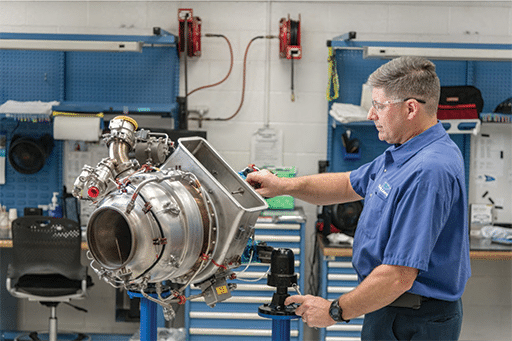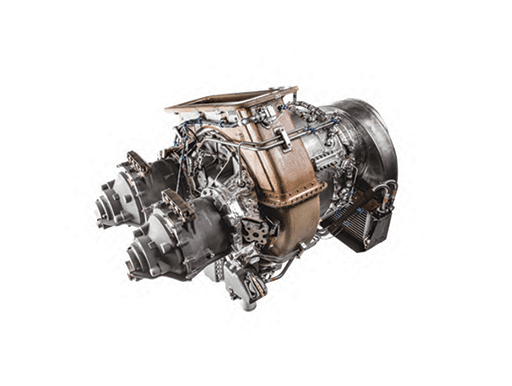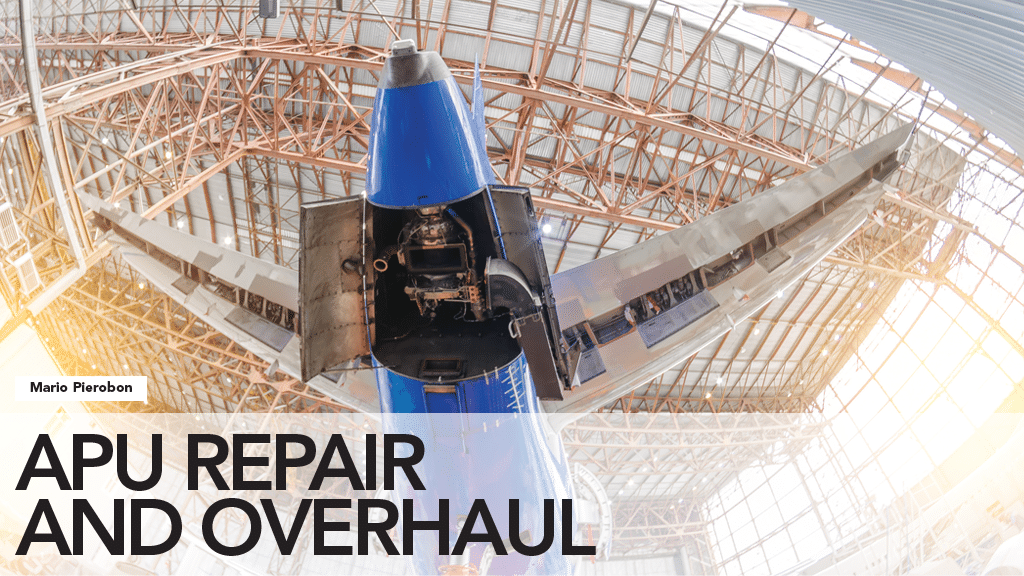The auxiliary power unit (APU) is a very strategic aircraft system requiring dedicated maintenance considerations. In this feature, we have reached out to industry experts to assess the requirements of aircraft operators with regard to APU repair and overhaul, the peculiarities of this type of maintenance, and the application of preventive and predictive maintenance principles.
Operators’ requirements
The airline operators are required to have an approved APU maintenance program that is generally consistent with the original equipment manufacturer’s (OEM) recommendations, and they have to perform all required line maintenance, preventive maintenance, routine periodic inspections, and replacement of life-limited components, affirms Bob Dorran, director of APU programs at StandardAero’s Maryville, Tenn., MRO facility. “They typically ask for APU repairs for unscheduled failures or performance deterioration, or scheduled events for replacement of life-limited components. They also typically ask for repair of APU line replacement units (LRU) that have failed and require repair separate from the APU,” he says.
With very few exceptions, APUs are operated on condition instead of following a maintenance schedule, observes Rodrigo Nardelli, vice president of global sales at TurbineAero Engines Technics. “This means operators will run the APU until it presents some level of failure. The value from the maintenance organization is to accurately review APU incoming condition and get the customer a quote that minimizes the maintenance cost, this is why we do what we call SMaRT (Strategic Maintenance and Repair Techniques) work scoping,” he explains. “Before we disassemble an APU, we put it on the test cell and try to identify the root cause of the failure, instead of getting APUs in production and immediately disassembling all sections of the APU.”
The majority of APUs manufactured and serviced by Pratt & Whitney Canada (P&WC) are for commercial aircraft, such as the APS3200 for the Airbus A320 aircraft family, the all-electric APS5000 for the Boeing 787 Dreamliner, the PW980A for the Airbus A380, or the APS2600E for the Embraer E170/190/195 regional jets, affirms Mathieu Asselin, director of APU global sales at P&WC. “For these customers, obviously, the dispatch availability of their aircraft is critical, and that availability is tied directly to the reliability and to the proper maintenance of the APU. So, when customers turn to us for the maintenance of their APUs they do so with a mindset of ‘keep my business running smoothly’,” he says.
P&WC is committed to ensure the maintenance of an aircraft’s APUs is as much as possible done when the aircraft is scheduled for regular airframe maintenance. “We focus on two goals: ensuring that replacement parts (either new or refurbished) are routinely installed to ensure the APUs continue to perform and operate on demand, and making every effort to keep costs down for our customers,” Asselin points out. “We work to provide our customers with a fully planned maintenance environment for their APUs, and we strive to minimize or eliminate maintenance issues that could affect their operations.”
Peculiarities of APU repair and overhaul
APUs are generally a minimum equipment list (MEL) item so the aircraft can continue to operate for a period of time with the APU inoperative where generally other systems cannot, observes Dorran. “To continue operating the aircraft after the MEL expiration period, the APU has to be repaired or be replaced with a serviceable one that many times can be accomplished by replacing a failed LRU without having to remove the APU. This generally requires the operator to stock suitable spares or have a reliable source,” he says.

The big difference between an APU and a propulsion engine is measuring the electrical performance as well as bleed air from the load compressor. Other than that, the APU is a gas turbine engine and has similar maintenance, according to Nardelli. “One thing to consider is that the main engine maintenance is scheduled, so there is a lot of planning that goes into it, which allows for preparation and scheduling maintenance for other systems at the same time,” he says. “With the APU coming off the aircraft at unpredictable intervals, the MRO needs to be more flexible in terms of scheduling, inventory levels to support unexpected demand. Also, since this is unscheduled for the majority of the operators, sometimes the airline does not have a spare unit available to put on the aeroplane while the APU is on the shop. In that case, we can provide a lease unit for the airline to install while we perform the overhaul on their equipment.”
P&WC offers various pay-per-hour maintenance plans for their APUs. “The programs provide stable, simplified APU management and financial planning tools that can guarantee operating costs and can be tailored to suit individual requirements. For example, the customer tracks the number of hours and the number of cycles the APU has operated every month, so they then pay a set hourly fee for the maintenance of the APU, and we assume the maintenance costs,” says Asselin.
P&WC also offers specialized maintenance programs under its P&WCSMART maintenance solutions. “These are high value solutions and cost guarantees that eliminate price variables and uncertainty, for some of our more popular APU models. These programs help customers extend the life of an aircraft by replacing APU fleets on a cost-effective basis or extending the life of the APU itself through replacement of key parts, again on a cost-effective basis,” affirms Asselin.
Preventive and predictive maintenance
With regard to APU repair and overhaul, preventive maintenance is applied by following the OEM’s recommendations concerning periodic inspections, checks and performance monitoring, according to Dorran. “Conversely, predictive maintenance is applied by following OEM soft time recommended replacement of components before failure to prevent the failure from causing additional damage which can greatly increase the repair cost of the APU. This is predicted by historically known failure modes and known operating times of how long the components can generally operate until failure,” he says.
The application of preventive maintenance by continuously monitoring and trending APU parameters is typical on newer generation aircraft, as some older aircraft do not record and report many APU performance metrics, observes Nardelli. “The on-wing trend monitoring provides an opportunity for early detection of potential trouble. These can be addressed right away by simpler maintenance or with a removal prior to failure, which leads to faster and cheaper maintenance for operators,” he says. “The benefits would also carry over into scheduled maintenance. In addition, executed preventive maintenance should keep the cost down on scheduled shop visits.”
According to Asselin, there are two aspects of predictive maintenance to point out. “One is predicting how the engine will perform throughout its lifecycle and the maintenance work scope that must be undertaken to promote reliable performance. The second is predicting how much the maintenance of the APU will cost over its lifetime and thus providing the ability to effectively budget for it,” he says.
Both elements of ‘predictability’ are extremely important to commercial airline customers, affirms Asselin. “To serve the first, we have a DP&HM (diagnostic, prognostic, and health management) product for some of our newer models of APUs. In particular, the program allows the customers to track the performance of their APU throughout its lifecycle; they can use the DP&HM data to plan their shop visits and thus avoid undesirable operational impacts such as downtimes or flight delays/cancellations,” he says.
The second element, dealing with lifecycle costs, is provided by P&WC’s pay-per-hour program, with which the customer’s maintenance costs are guaranteed, affirms Asselin. “In a ‘no-surprises’ APU maintenance environment, the airline has the peace of mind knowing that its cash flow will not be diminished by unexpected maintenance costs and that assurance is of considerable value in a commercial setting,” he concludes.

Pratt & Whitney image
